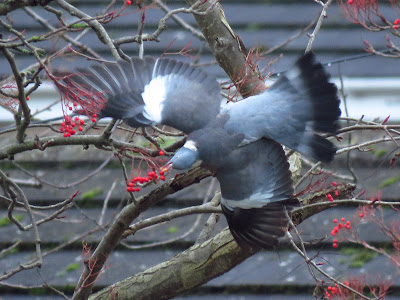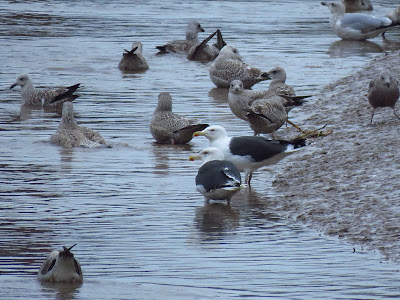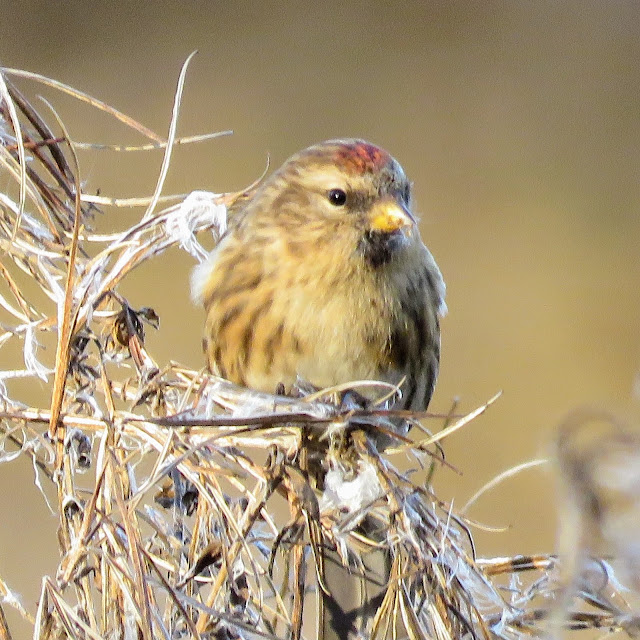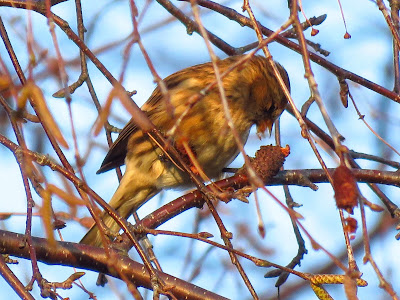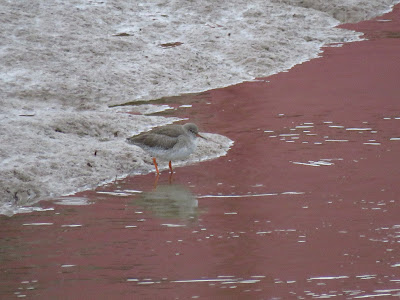Redpolls are small, streaked finches with a tiny bill, a crimson spot on the forehead and a little black bib and mask. Males also have a crimson stained chest. They are found from the Arctic, to subarctic and temperate open forest and scrub and specialise on small seeds, mainly from birch, alder, willow, spruce and conifer seeds taken. They will also feed on wildflower seeds near the ground. They are agile and are able to use their feet deftly to hold catkins in place, to be able to feed on the seeds more easily, and often hang upside down from thin branches.
One of a flock of about 15 appeared to be feeding on buds. Noddle Hill LNR, 17 March 2014.
Noddle Hill LNR, 17 March 2014.
27 December 2020, Sculcoates Lane.
27 December 2020, Sculcoates Lane. Note how the Redpoll is holding a birch catkin with its foot while feeding
13 December, Sculcoates N Cemetery.
Status and distribution in Hull
The Lesser Redpoll, Redpoll for short, used to be a scarce, but regular breeding bird in the Hull in the 60s and 70s in several areas, like the Northern Cemetery, Newland Park, Cottingham Road and the Hedon Road old railway line in areas, where streets were often lined with birch. By the mid 80s their numbers dropped drastically in lowland areas in the UK, particularly in the south and east, with Hull following this sad trend. The last recorded breeding was in the late 90s, when they became extinct as breeding birds. Since then, they are scarce passage and irruptive birds, from early November to the end of April. Redpoll flocks have erratic, nomadic, movements in winter in search of seeds, often travelling in the company of Siskins. Irruption years follow failures on the seed crops on which they rely, or high population densities after a good crop year, often spurred by cold weather. Sites where they've been recorded include Noddle Hill LNR, Sculcoates area, Oak Road Playing fields and even in the University, but any scrubby area with birch and alder, might attract them.

The avenue of birches at Northern Cemetery, a location where a colony of Redpolls bred in the 60s and 70s. Brian Pashby wrote "This road, about 30ft
wide, is flanked by silver birches, which in Autumn provide a very
colourful picture, and which are the headquarters of Hull's only colony of
Redpolls." Pashby reported 4-6 breeding pairs in the cemetery.
Conservation and Management
Lesser Redpoll is a UK BAP priority bird species (2007) and is in the the Birds of Conservation Concern 5 Red list.
More information
Broughton, R.K. 2002.
Birds of the Hull Area. Kingston Press. Hull, UK.
BTO Redpoll Factsheet.
Pashby, B.S. 1965. Birds of a suburban cemetery. Hull Natural History Society Newsletter. Reprinted in the Bulletin (2021) no 5.1. pp. 22-26.


